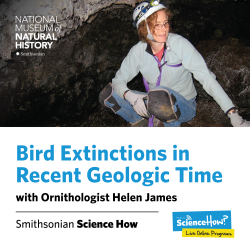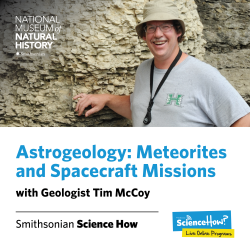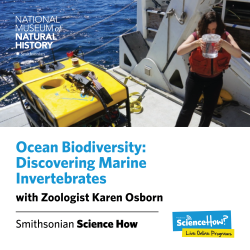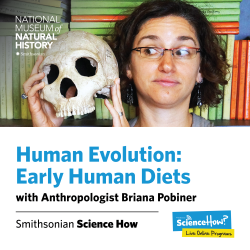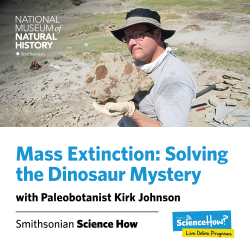Smithsonian Science How's collections
Bird Extinctions in Recent Geologic Time
<p>This Smithsonian Science How learning collection, from Q?rius at the National Museum of Natural History, is part of a distance learning program at <a href="https://naturalhistory.si.edu/education/distance-learning" target="_blank">https://naturalhistory.si.edu/education/distance-learning</a>. This collection focuses on recent bird extinctions, including the Passenger Pigeon. Targeted at middle schoolers, the collection invites students into an authentic understanding of the evidence for and causes of bird extinctions since humans have been on the scene. Ornithologist Dr. Helen James is featured as an expert explainer. The collection includes an interactive webcast video with discussion questions, cross-cutting activities, an independent project, and other resources for teachers and students.</p>
<p><strong>Key Terms:</strong> ornithology, bird conservation, extinction, endangered species, island ecosystems, Holocene period</p>
<p><strong>Key Concepts:</strong></p>
<p>- Human influences on bird populations</p>
<p>- Ecology of birds and vulnerability to extinction</p>
<p>- Impacts of human activities on ecology</p>
<p>- Conservation of endangered bird species</p>
<p>- Technology used by ornithologists</p>
 Smithsonian Science How
Smithsonian Science How
15
Astrogeology- Meteorites and Spacecraft Missions
<p>This Smithsonian Science How learning collection, from Q?rius at the National Museum of Natural History, is part of a distance learning program at <a href="https://naturalhistory.si.edu/education/distance-learning">https://naturalhistory.si.edu/...</a> This collection focuses on meteorites and related spacecraft missions. Targeted at middle schoolers, the collection invites students into an authentic understanding of meteorites as sources of information about our solar system. Geologist Dr. Tim McCoy is featured as an expert explainer. The collection includes an interactive webcast video with discussion questions, cross-cutting activities, an independent project, and other resources for teachers and students.</p>
<p><strong>Key Terms:</strong> geology, meteorites, asteroids, minerals, space missions, orbit, solar system history</p>
<p><strong>Key Concepts:</strong></p>
<p>- Evidence from meteorites about Earth's formation</p>
<p>- Characteristics of meteorites, meteors, asteroids</p>
<p>- Mineral origins of the universe</p>
<p>- Importance of space missions for astronomy</p>
<p>- Technology used by meteoriticists</p>
 Smithsonian Science How
Smithsonian Science How
13
Ocean Biodiversity - Discovering Marine Invertebrates
<p>This Smithsonian Science How learning collection, from Q?rius at the National Museum of Natural History, is part of a distance learning program at <a href="https://naturalhistory.si.edu/education/distance-learning">https://naturalhistory.si.edu/...</a> This collection focuses on the biodiversity of tiny, deep ocean life. Targeted at middle schoolers, the collection invites students into an authentic understanding of how biologists find, classify, and name microscopic animals that live in the open ocean. Zoologist Dr. Karen Osborn is featured as an expert explainer. The collection includes an interactive webcast video with discussion questions, cross-cutting activities, an independent project, and other resources for teachers and students.</p>
<p><strong>Key Terms:</strong></p>
<p><em>marine zoology, mid-water, pelagic, invertebrate, biodiversity, DNA barcoding, taxonomy</em></p>
<p><strong>Key Concepts:</strong></p>
<ul><li>Mid-water ecosystem biodiversity</li><li>Distribution of mid-water animals</li><li>Ecology and adaptations of ocean invertebrates</li><li>Ocean biodiversity and its global importance</li><li>Technology used by marine invertebrate zoologists</li></ul>
 Smithsonian Science How
Smithsonian Science How
13

